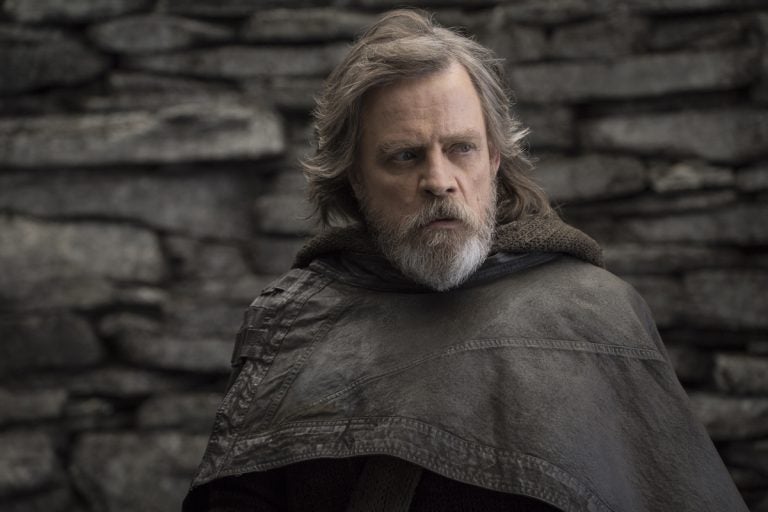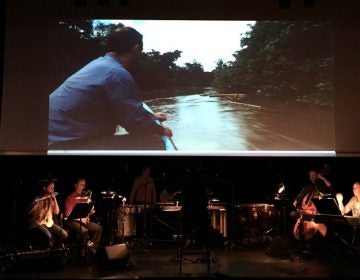The reason fans who should love ‘The Last Jedi’ most are the only ones who hate it
The first step to understanding the reaction is realizing that, to many fans, there has already been a trilogy to follow 1983's "Return of the Jedi."

This image released by Lucasfilm shows Mark Hamill as Luke Skywalker in "Star Wars: The Last Jedi." (John Wilson/Lucasfilm via AP)
There is a great disturbance in the Force. Have you felt it?
To be fair, you might not have. After all, “The Last Jedi” grossed $220 million over the weekend trailing only “The Force Awakens,” the preceding episode in the Star Wars saga, in the record books. It also did tremendously well with critics, scoring a 93 percent rating on Rotten Tomatoes. To top it all off, it received a sterling A rating from the audience exit poll survey conducted by CinemaScore.
Among the franchise’s hard-core fan base, however, feelings are decidedly split. Many (including yours truly) adore the movie as one of the finest entries in the series. Yet when we exited the theater and logged on to Twitter (that wretched hive of scum and villainy!) the reaction from many others was pure rage.
This anger found outlets in YouTube video reviews and the Rotten Tomatoes audience score, which was sent plummeting to levels not seen since “The Phantom Menace.” Now the general public is left scratching their heads as to why a picture they enjoyed is so fiercely dividing diehard fans. Although this type of reception is unprecedented, it doesn’t come as a surprise to those who know Star Wars best.
Will the real Star Wars saga please stand up?
The first step to understanding the reaction is realizing that, to many fans, there has already been a trilogy to follow 1983’s “Return of the Jedi.” In 1988, publisher Bantam Books reached out to Lucasfilm to create a follow-up to the original trilogy. At this point, Lucas was still reeling from a painful divorce and so he decided to shelve his initial plan to make nine films. While he never quite gave up the dream of doing a prequel trilogy someday, he had no desire to continue the story of Luke, Han, and Leia.
As a result, Lucas eventually signed off on an ambitious plan concocted by publisher Lou Aronica and popular sci-fi novelist Timothy Zahn. Zahn would essentially write his own sequel trilogy with minimal input from Lucas. When the first of these volumes hit the bookshelves in 1991, it became a best-seller and reinvigorate the dormant franchise.
Throughout the 1990s, the “expanded universe,” as the various novels, comic books, and video games were called, exploded in number. This led to a key question: Are these works official, canonical parts of the Star Wars story or a form of semi-sanctioned fan-fiction? The unsatisfactory answer was “both” — with Lucasfilm eventually creating a five-tiered system in an attempt to install some semblance of order.
Disney sought to start over after purchasing the company in 2012. Only theatrically released films and animated series “The Clone Wars” would remain. Everything else would be reclassified as “Legends” while all future novels, comics, and video games would get to be official cannon.
Pandora’s box, however, had already been opened. The dilemma of whether art belongs to the creator or the audience is complicated enough without letting the audience get involved in the construction. Lucas got burned by this dynamic during the production of his poorly received prequel entries. Fans inevitably had their own ideas for how those movies should go, an attitude that angered the creator.
“The point is, like if you paint your house white and somebody comes over, ‘Well that should be a green house.’ Well, fine, but I wanted to paint it white,” Lucas explained to 60 Minutes in 2005. “I don’t think there was anything wrong with painting it white. I don’t think there’s anything wrong with me for painting it white. Maybe it should be a green house, but I didn’t want it to be a green house. I wanted it to be a white house.”
This is a rational argument, but it’s undercut at least a little bit when you hold an annual Star Wars fan films contest.
Some fans don’t like surprises
The interactive component to Star Wars was taken to another level by J.J. Abrams in “The Force Awakens.” Abrams is infamous for his mystery box approach to storytelling and Star Wars takes pride in its rhythmic storytelling and surprise familial connections.
In that context, consider all that Episode VII, “The Force Awakens,” seemingly set up. Rey, our main protagonist, has an unknown origin (as does Finn, our secondary protagonist). She is called to the Skywalker lightsaber and when she first touches it sees visions of mysterious past and future events. The central villain, Supreme Leader Snoke, is only portrayed via hologram and we are given none of his background. Finally the film ends on a literal cliffhanger, as Rey presents Luke Skywalker with his old lightsaber. And then the credits roll before we can see his answer.
Given all this, it shouldn’t be surprising that many fans considered questions like “Who are Rey’s parents?” and “Who is Snoke?” as puzzles that could be solved. Why present us with an Easter egg-filled force vision, the thinking went, if answers were not embedded somewhere inside. This strategy spawned thousands of YouTube videos, ranging from thought-provoking to the laughter-inducing.
In the end, Rian Johnson produced a completely different film from what fans were expecting. I’ll let others explain why his answers, while unexpected, are actually brilliant. Just don’t blame him for feeling like you were fooled by trick questions.
Sure it would be easy to just mock the detractors, but for decades Lucasfilm convinced them that Star Wars had to fit a certain formula. To watch Rian Johnson break the mold in “The Last Jedi” is shocking — yet also thrilling.
Ultimately, though, those upset diehards have to admit the truth. They aren’t angry that Johnson’s vision is different from theirs, they’re jealous that it’s better than anything they would have come up with.
WHYY is your source for fact-based, in-depth journalism and information. As a nonprofit organization, we rely on financial support from readers like you. Please give today.





